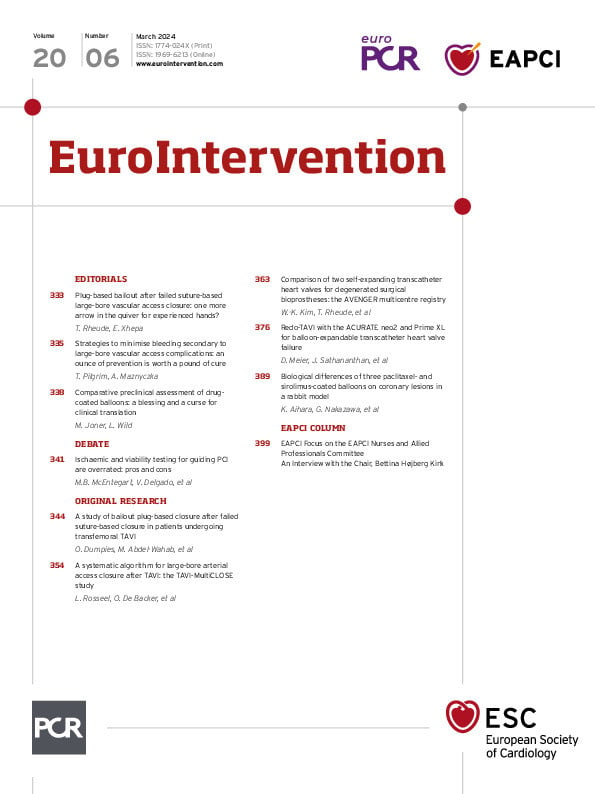Abstract
Background: Despite transcatheter aortic valve implantation (TAVI) having become a routine procedure, access site bleeding and vascular complications are still a concern which contribute to procedure-related morbidity and mortality.
Aims: The TAVI-MultiCLOSE study aimed to assess the safety and efficacy of a new vascular closure algorithm for percutaneous large-bore arterial access closure following transfemoral (TF)-TAVI.
Methods: All consecutive TF-TAVI cases in which the MultiCLOSE vascular closure algorithm was used were prospectively included in a multicentre, observational study. This stepwise algorithm entails the reinsertion of a 6-8 Fr sheath (primary access) following the initial preclosure with one or two suture-based vascular closure devices (VCDs). This provides the operator with the opportunity to perform a quick and easy angiographic control and tailor the final vascular closure with either an additional suture- or plug-based VCD, or neither of these.
Results: Among 630 patients who underwent TF-TAVI utilising the MultiCLOSE algorithm, complete arterial haemostasis was achieved in 616 patients (98%). VCD failure occurred in 14 patients (2%), treated with either balloon inflation (N=1), covered stent (N=12) or surgical repair (N=1). Overall, this vascular...
Sign up for free!
Join us for free and access thousands of articles from EuroIntervention, as well as presentations, videos, cases from PCRonline.com




